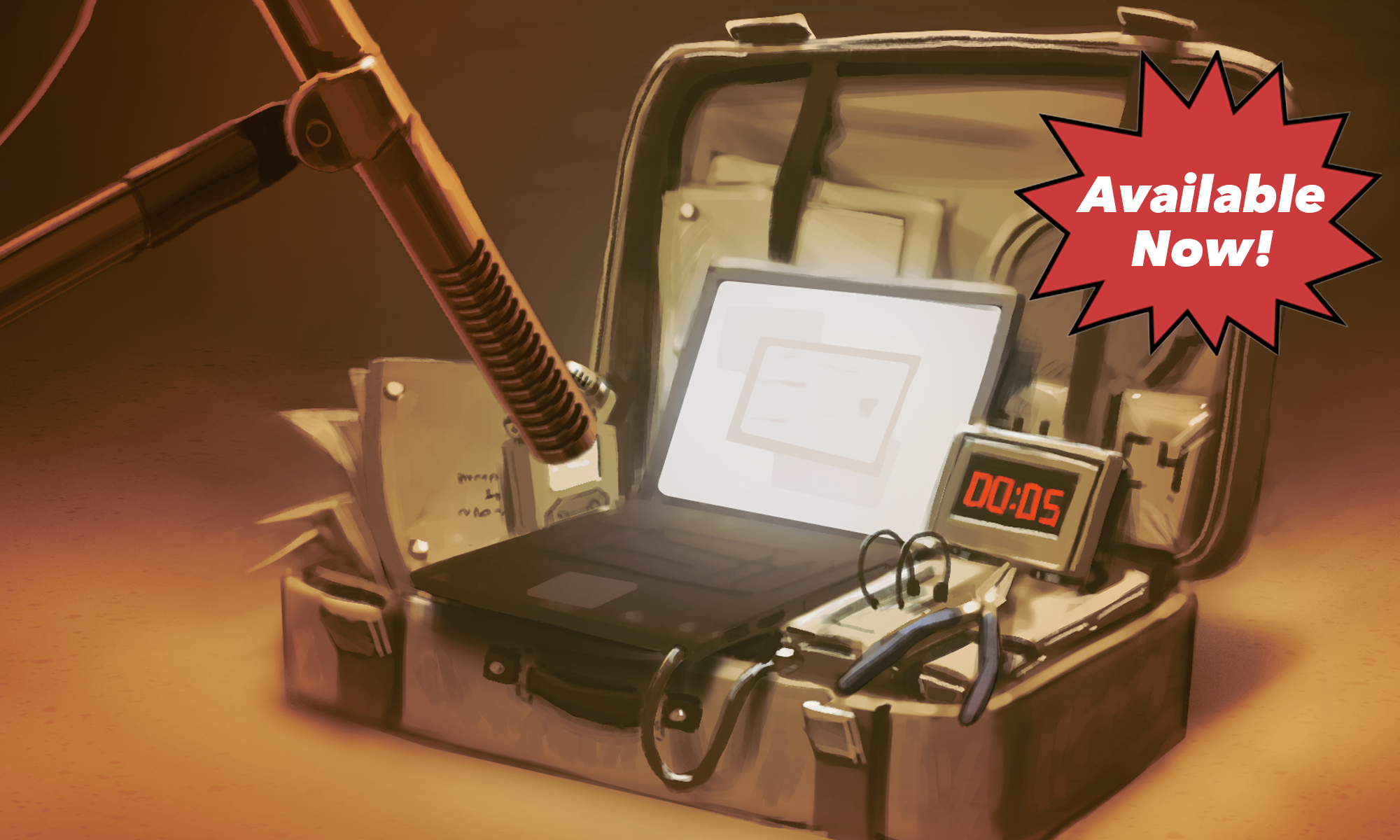Bombs Always Beep: Creating Modern Audio Theater is an exploration of the entire production process of constructing modern audio narratives. Podcasts have facilitated a renaissance of independent audio-only series, and they are expanding at a rapid rate. Currently, there are no other books available that explain in detail the inner workings of creating audio narratives by way of the new podcast distribution system. Most literature focuses on the dated production and writing methods from the Golden Age of Radio or the BBC radio distribution models. However, entire companies are now being built upon contemporary storytelling production techniques, funded by crowdsourcing and advertising. This book covers the process from beginning to end: How to create compelling modern audio theater and distribute it online.
Everything starts with a good story, and how to find that story can be an intensive process. Included in the first section is an exploratory method, Story Workshop, which start with a simple narrative concept and then continues to expand in a natural progression. All the while keeping in mind that the single, basic underlying theme of Audio Theater is to discover the story through the characters.
Knowing the story is the first step. The second is to know how to tailor it for the audio-space. Audio theater is an entirely new medium. The art of Film shows everything on the screen. Novels use only words. This art form falls somewhere in-between. The imagination of the listener becomes the stage. As the production is heard, the details begin to fill in. The more specifically designed the audio, the more vivid the aural image becomes. The key throughout the entire process is to focus on clarity. Writing for audio becomes an experiment of engagement to stimulate visualization, while still finding the proper voice for the story and characters.
At the end of the exploration, the idea needs to be translated onto the page and properly formatted, so that the art can become part of the machine that is Production.
Audio-only production presents its own set of unique challenges when dealing with things that are similar to film production such as budgeting, scheduling, auditions, contracts, deal memos, and unions. Simple components like scheduling can become an inflated nightmare due to the speed of the recording process and the large amount of material that is typically covered during one session. Auditions are essentially all about focusing on the voice, looking at the technical aspects of a person’s diction and overall clarity. When dealing with actors and unions, there are a lot of different considerations and restrictions, as the project could be covered under the SAG/AFRTA New Media Agreement. There are a lot of steps to follow, and each one is carefully explained here in simple terms. One of the overall goals of this book is to try and answer the questions that audio producers need to know to be able to fully understand and flourish within the medium.
Such as: How does one run a recording session? How does a director works with actors performing only through audio? Directing on the recording stage is all about actively listening to the details of what’s being said and how. The energy and momentum of this created world becomes dictated by the voices therein.
The post-production workflow provides the instructions on how to handle all the raw recorded material to the final edits. Audio recording sessions create a massive amount of raw material to sort through, without visual references for tracking. Each stage of work comes with unique technical considerations. With proper digital asset management techniques, the raw recordings can be logged in a way to maximize post-productivity and minimize man-hours. Standardization of editing templates also help organize audio-flow and multi-editor collaboration. When all the stages of post-production work together in a cohesive way, the editing environment becomes prepared for the the most important process of Post Production: the Art of Sound Design.
How a production creates the sound around the characters differs from series to series. Often, only a narrow portion of the aural palette is ever used. In audio theater, sound design needs to be a character unto itself. Well-crafted audio effects can tell stories without dialogue, build scenes without exposition, and has the ability to change time and space with only a few alterations and techniques.
The audio needs to follow the characters, detailing how they interact and connect to the world. Most of this is done through Foley, which is a tool to re-create a specific sound to match the action, or in this case, voices. A voice by itself floats above the scene, while Foley grounds it in reality. Looking at a sample scene in the Sound Design section of the book, the process is broken down to demonstrate how each individual sound fully illustrates the action.
Everything is created without a word of dialogue, built around the performer’s breath, the movement of Foley, detailed with stock sound effects and music tailored to fit. A composed score can fill in the spaces between the scenes and in the background, however, it needs to have an equal seat at the table with dialogue and effects. No individual element should have a consistently heavier presence over the others.
Throughout the production segments of the book, there are sections specifically dedicated to the “guerilla” audio dramatists. Various corners can be cut to keep the overall cost down. High-end equipment is not always needed to obtain high-end results. A little extra work can go a long way.
In the end, however, quality doesn’t matter if no one is listening. Distributing the production through the proper channels becomes vital to its success. Social media marketing has become complicated in the pay-for-impression age of restricted visibility, but there are still ways to be heard.
My final intention for this book is to convey the ambitions for the medium. As the number of listeners grow, the opportunities expand for potential cooperation on issues such as mature-content-rating standardizations. The radio drama industry used to be a major American center for profitability and entertainment, and can be again. Life in modern times has become a more open-listening atmosphere. People are on the go, often driving long distances or stuck in traffic- ideal for the audio escape. Exercise routines could always use a little mental distraction from the physical exertion. Chores often seem like they’re endless, but can melt away if accompanied by your favorite characters on another adventure. Audio theater gives the listener the opportunity to tune out of their own world, and into an all new one. Another type of listener is also being recognized. There’s a growing audience that chooses to completely tune out everything else that might be a distraction. By putting on headsets and closing their eyes, this listener becomes surrounded by the sound; transporting them inside the story.
This merger of art and technology will continue to expand the medium, and if handled properly, Modern Audio Theater could become the unique center for entertainment and profitability that it once was.

